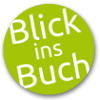The Book of Blam, Aleksandar Tišma's "extended kaddish . . . [his] masterpiece" (Kirkus Reviews), is a modern-day retelling of the book of Job. The war is over. Miroslav Blam walks along the former Jew Street, and he remembers. He remembers Aaron Grün, the hunchbacked watchmaker; and Eduard Fiker, a lamp merchant; and Jakob Mentele, a stove fitter; and Arthur Spitzer, a grocer, who played amateur soccer and had non-Jewish friends; and Sándor Vértes, a lawyer who was a Communist. All dead. As are his younger sister and his best friend, a Serb, both of whom joined the resistance movement; and his mother and father in the infamous Novi Sad raid in January 1942-when the Hungarian Arrow Cross executed 1,400 Jews and Serbs on the banks of the Danube and tossed them into the river.
Blam lives. The war he survived will never be over for him.
Aleksandar Tišma (1924–2003) was born in the Vojvodina, a former province of the Austro-Hungarian Empire that had been incorporated into the new kingdom of Yugoslavia after the First World War. His father, a Serb, came from a peasant background; his mother was middle-class and Jewish. The family lived comfortably, and Tišma received a good education. In 1941, Hungary annexed Vojvodina; the next year—Tišma’s last in high school—the regime carried out a series of murderous pogroms, killing some 3,000 inhabitants, primarily Serbs and Jews, though the Tišmas were spared. After fighting for the Yugoslav partisans, Tišma studied philosophy at the University of Belgrade and went into journalism. In 1949 he joined the editorial staff of a publishing house, where he remained until his retirement in 1980. Tišma published his first story, “Ibika’s House,” in 1951; it was followed by the novels Guilt and In Search of the Dark Girl and a collection of stories, Violence. In the 1970s and ’80s, he gained international recognition with the publication of his Novi Sad trilogy: The Book of Blam (1972), about a survivor of the Hungarian occupation of Novi Sad; The Use of Man (1976), which follows a group of friends through the Second World War and after; and Kapo (1987), the story of a Jew raised as a Catholic who becomes a guard in a German concentration camp. Tišma moved to France after the outbreak of war and collapse of Yugoslavia in the early 1990s, but in 1995 he returned to Novi Sad, where he spent his last years.
Michael Henry Heim (1943–2012) was a professor of Slavic languages at the University of California, Los Angeles. Fluent in eight languages, Heim was the recipient of many awards and translated such writers as Anton Chekhov, Milan Kundera, Günter Grass, Bohumil Hrabal, Danilo Kiš, and Dubravka Ugrešić. He is the subject of The Man Between: Michael Henry Heim & A Life in Translation, edited by Esther Allen, Sean Cotter, and Russell Scott Valentino.
Charles Simic is a poet, essayist, and translator. He has published some twenty collections of poetry, six books of essays, a memoir, and numerous translations. He is the recipient of many awards, including the Pulitzer Prize, the Griffin Poetry Prize, and a MacArthur Fellowship. Among Simic’s recent works are New and Selected Poems: 1962–2012, The Lunatic, and Confessions of a Poet Laureate, a book of essays that was published by New York Review Books as an e-book original. In 2007 Simic was appointed the fifteenth Poet Laureate Consultant in Poetry to the Library of Congress.
 Und dann auf "Zum Home-Bildschirm [+]".
Und dann auf "Zum Home-Bildschirm [+]".

